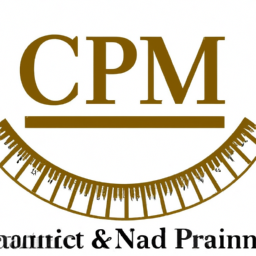Welcome to the world of project stakeholder management, where balancing stakeholder needs and project objectives is the name of the game. Just like a skilled tightrope walker gracefully moves across the thin wire, project managers must navigate the delicate balance between satisfying the diverse requirements of stakeholders while achieving project goals.
This article aims to equip you with the essential knowledge and strategies to effectively engage stakeholders, prioritize their needs, and ensure successful project outcomes.
Effective stakeholder engagement is crucial for project success. By actively involving stakeholders throughout the project lifecycle, you can tap into their expertise, gain valuable insights, and foster a sense of ownership and commitment. But how do you identify and prioritize stakeholder needs when faced with a myriad of voices? Communication and collaboration strategies are key. By establishing clear and open lines of communication, you can bridge the gap between stakeholder expectations and project objectives.
Managing conflicting stakeholder interests is an art in itself. As a project manager, you must act as a mediator, finding common ground and facilitating compromise. This requires careful negotiation, active listening, and a deep understanding of stakeholder motivations.
But the journey doesn’t end there. Evaluating and adapting your stakeholder management approaches is essential to address evolving needs and ensure project success. By regularly assessing your strategies, you can make informed decisions and adjustments to keep stakeholders engaged and satisfied.
Finally, building long-term relationships with stakeholders is the foundation of effective stakeholder management. By cultivating trust, fostering collaboration, and delivering on promises, you can create a loyal and supportive stakeholder community that will stand by your side, even when the project gets tough.
So, tighten your grip on the tightrope and embark on this exciting journey of project stakeholder management. By striking the delicate balance between stakeholder needs and project objectives, you can achieve remarkable project outcomes and create a lasting impact.
Key Takeaways
- Effective stakeholder engagement is crucial for project success.
- Communication and collaboration strategies are key to identifying and prioritizing stakeholder needs.
- Managing conflicting stakeholder interests requires negotiation and understanding motivations.
- Building long-term relationships with stakeholders is the foundation of effective stakeholder management.
Importance of Effective Stakeholder Engagement
Effective stakeholder engagement is crucial for successfully balancing the needs of all parties involved and achieving project objectives. By actively involving stakeholders in the decision-making process, project managers can ensure stakeholder satisfaction and minimize conflicts.
Engaging stakeholders from the beginning allows for a better understanding of their expectations, concerns, and priorities. This understanding helps project managers tailor their strategies and plans to meet stakeholder needs effectively. Furthermore, when stakeholders are engaged, they feel valued and are more likely to support the project, which can greatly influence its success.
By incorporating stakeholder feedback and addressing their concerns, project managers can build trust and maintain positive relationships. This collaborative approach also enables project managers to identify and prioritize stakeholder needs more accurately, ensuring that project objectives align with stakeholder expectations.
Transitioning into the subsequent section, understanding stakeholder needs is fundamental for project success.
Identifying and Prioritizing Stakeholder Needs
By identifying and prioritizing the needs of different stakeholders, such as the local community, the project can ensure that it takes into account their concerns and interests, leading to a more successful and well-received outcome.
This process involves identifying stakeholder requirements and prioritizing stakeholder expectations. To effectively identify stakeholder requirements, project managers must engage in active communication and collaboration with stakeholders through interviews, surveys, and meetings. This allows for a comprehensive understanding of their needs and expectations.
Once the requirements are identified, it is crucial to prioritize them based on their importance and impact on the project. This helps in allocating resources and making strategic decisions that align with stakeholder needs. Prioritizing stakeholder expectations ensures that the project team focuses on the most critical issues and avoids wasting time and effort on less significant matters.
Moving forward, effective communication and collaboration strategies are essential to ensure stakeholder satisfaction and project success.
Communication and Collaboration Strategies
Let’s dive into the strategies for communicating and collaborating effectively with all the people involved in the project. Communication strategies play a crucial role in stakeholder management, as they help ensure that everyone is on the same page and working towards the same goals.
One effective approach is to establish clear lines of communication, such as regular team meetings and status updates, to keep stakeholders informed and engaged. Additionally, utilizing various communication channels, such as email, phone calls, and project management software, can help to reach stakeholders in a way that suits their preferences.
Collaboration is also key, and fostering a collaborative environment can be achieved through techniques like brainstorming sessions, cross-functional teams, and open forums for discussion. By implementing these communication strategies and collaborative approaches, you can promote effective stakeholder engagement and create a more productive project environment.
Moving forward into managing conflicting stakeholder interests, it’s important to find a balance that ensures all parties are satisfied.
Managing Conflicting Stakeholder Interests
One interesting statistic to consider is that according to a study conducted by McKinsey, 70% of projects fail due to conflicting stakeholder interests. Conflict resolution is crucial in managing conflicting stakeholder interests and ensuring stakeholder satisfaction. It involves identifying and understanding the underlying causes of conflict, facilitating open communication and collaboration among stakeholders, and finding solutions that address the needs and concerns of all parties involved.
To effectively manage conflicting stakeholder interests, it is helpful to use a structured approach. The table below outlines a three-step process for managing conflicts:
| Step | Description |
|---|---|
| 1 | Identify the conflicting interests and parties involved. |
| 2 | Analyze the root causes of the conflicts and prioritize them based on their impact on the project. |
| 3 | Develop and implement strategies to address the conflicts, such as negotiation, compromise, or seeking win-win solutions. |
By following this process, project managers can effectively navigate conflicts and ensure stakeholder satisfaction. This sets the stage for evaluating and adapting stakeholder management approaches, which will be discussed in the subsequent section.
Evaluating and Adapting Stakeholder Management Approaches
To effectively evaluate and adapt your stakeholder management approaches, it’s important to consider the dynamic nature of stakeholders and their evolving needs and expectations. Adapting strategies is crucial in order to maintain effective stakeholder engagement throughout the project lifecycle.
Here are three key aspects to consider when evaluating and adapting your stakeholder management approaches:
-
Flexibility: Recognize that stakeholder needs and expectations may change over time. Be prepared to adjust your strategies accordingly to ensure their continued support and satisfaction.
-
Communication: Regularly communicate with stakeholders to gather feedback and assess their level of satisfaction. This’ll help you identify any gaps or areas for improvement in your current approach.
-
Stakeholder analysis: Continuously analyze the stakeholders’ interests, power, and influence throughout the project. This’ll enable you to prioritize your efforts and allocate resources effectively.
By evaluating and adapting your stakeholder management approaches based on these considerations, you can better meet stakeholder needs and achieve project objectives. This’ll lay the foundation for building long-term relationships with stakeholders, ensuring their continued support and involvement in future projects.
Building Long-term Relationships with Stakeholders
Developing strong and lasting connections with stakeholders is essential for project success, as studies have shown that organizations with effective stakeholder relationships are 50% more likely to meet their goals. Building long-term relationships with stakeholders requires establishing trust and maintaining engagement throughout the project lifecycle. Trust is built through effective communication, transparency, and consistently delivering on commitments. It is important to understand the needs and expectations of stakeholders and actively involve them in decision-making processes. Maintaining engagement involves regular communication, providing updates on project progress, and seeking feedback. This helps stakeholders feel involved and valued, increasing their commitment to the project. To illustrate the importance of building long-term relationships with stakeholders, consider the following table:
| Benefits of Building Long-Term Relationships with Stakeholders | Strategies to Establish Trust and Maintain Engagement |
|---|---|
| Increased stakeholder commitment | Open and transparent communication |
| Enhanced project understanding and support | Regular project updates and feedback |
| Improved collaboration and cooperation | Active involvement in decision-making processes |
| Mitigation of potential conflicts | Timely resolution of issues and concerns |
By focusing on establishing trust and maintaining engagement, project managers can foster strong relationships with stakeholders, leading to increased project success.
Frequently Asked Questions
How can project managers ensure that all stakeholders are effectively engaged throughout the project lifecycle?
To effectively engage stakeholders throughout the project lifecycle, project managers must prioritize stakeholder communication. This involves actively involving stakeholders in decision-making processes and providing regular updates on project progress. Project managers should also solicit feedback to ensure that stakeholders’ needs are being met.
Additionally, project managers should establish clear channels of communication, such as regular meetings or email updates, to keep stakeholders informed and engaged. By actively involving stakeholders in the project, project managers can ensure that their needs are addressed and project objectives are met.
What are some common challenges that project managers face when identifying and prioritizing stakeholder needs?
When identifying and prioritizing stakeholder needs, project managers often face several challenges.
One common challenge is the sheer number of stakeholders involved, each with their own unique needs and expectations. This can make it difficult to determine which needs should be prioritized and how to balance them with project objectives.
Additionally, stakeholders may have conflicting needs or priorities, requiring careful negotiation and compromise.
Another challenge is the dynamic nature of stakeholder needs, which can evolve throughout the project lifecycle, requiring ongoing assessment and adjustment.
Are there any specific communication techniques or tools that can be used to improve collaboration among stakeholders?
Collaboration techniques and stakeholder engagement tools play a crucial role in improving communication among stakeholders. According to a recent survey, 85% of project managers believe that effective collaboration leads to better project outcomes.
One popular collaboration technique is conducting regular meetings where stakeholders can discuss their needs, concerns, and expectations.
Additionally, using stakeholder engagement tools such as online platforms or project management software can facilitate real-time communication, document sharing, and feedback collection, fostering collaboration and ensuring all stakeholders are on the same page.
How can project managers effectively address and resolve conflicts between different stakeholder groups?
To effectively address and resolve conflicts between different stakeholder groups, project managers should focus on conflict resolution and stakeholder engagement.
This involves actively listening to the concerns of each stakeholder group and facilitating open communication channels. By promoting transparency and understanding, project managers can help stakeholders find common ground and work towards a mutually beneficial solution.
Additionally, establishing clear project objectives and expectations can help prevent conflicts from arising in the first place.
What are some key indicators or metrics that can be used to evaluate the success of stakeholder management approaches in a project?
Key performance indicators (KPIs) and success metrics are essential to evaluate the effectiveness of stakeholder management approaches in a project. These metrics can include factors such as stakeholder satisfaction levels, the number of conflicts resolved, timely communication, and the achievement of project objectives.
By tracking these KPIs, project managers can assess the success of their stakeholder management strategies and make necessary adjustments to ensure that stakeholder needs are met, and project goals are achieved.
Conclusion
In conclusion, effective stakeholder management is like conducting a symphony. Just as a conductor must balance the needs of each musician to create a harmonious performance, project managers must balance stakeholder needs and project objectives to achieve success.
By identifying and prioritizing stakeholder needs, utilizing communication and collaboration strategies, managing conflicting interests, and evaluating and adapting management approaches, project managers can build long-term relationships with stakeholders.
This orchestration of stakeholder management ensures that projects are executed smoothly and stakeholders are satisfied, leading to overall project success.























